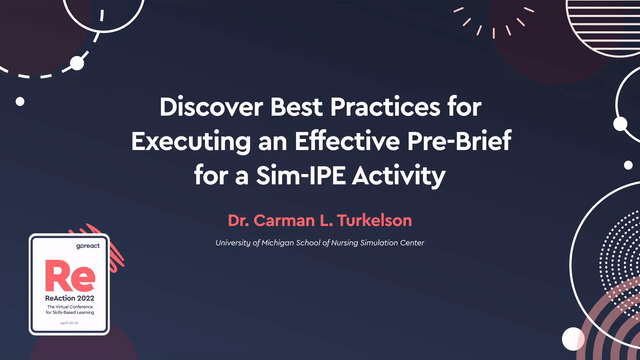Dr. Carman L. Turkelson:
So the pre-briefing, that’s when we all gather together in a small kind of conference area so this is the 9 to 11 students all coming together. We’re introducing ourselves. We had two faculty facilitators at each of the sessions and again, trying to represent each two professions in our facilitators, too. So it wasn’t just a nursing or a PT faculty or radiation therapy. Two of us were there for all of the sessions.
And we introduced ourselves. We had the students introduce themselves. We obtained consent because this was an IRB based project. And we were collecting data from the students. And students could opt out if they wanted to in terms of allowing us to use the reflections for the data collection. They could not opt out of participating in the activity because it was considered part of our coursework, non-graded. But they could opt out of allowing us to use their reflections. And I don’t think really any of them did that.
But we distributed all that paperwork. And then part of the pre-briefing had us breaking that group of 9 to 11 students into two smaller interprofessional groups. And we kind of did this randomly. If I’m remembering right, I think we asked them like what’s your favorite color? And if people said red, two people said red, then they were on a team together or pink, then you were on the red team. And so it really kind of organically brought them together.
We also went through the House of Horrors activity guidelines. And so they were going to go into a room where they were going to see a lot of different errors. They were not going to be able to talk to any of their teammates. So that again, they were in a group of four to six. They would go in there with their clipboards and their paper. And they are going to write down as many errors as they could find in the five minutes that they were in that room.
They could not talk to each other. They could lift up things. They could move things. They could walk around. But the one key thing was not to talk to anybody else while they were in that room. So we went through those guidelines. And then we split them up. So one group went into the house of horrors, and the other group stayed with the facilitators.





